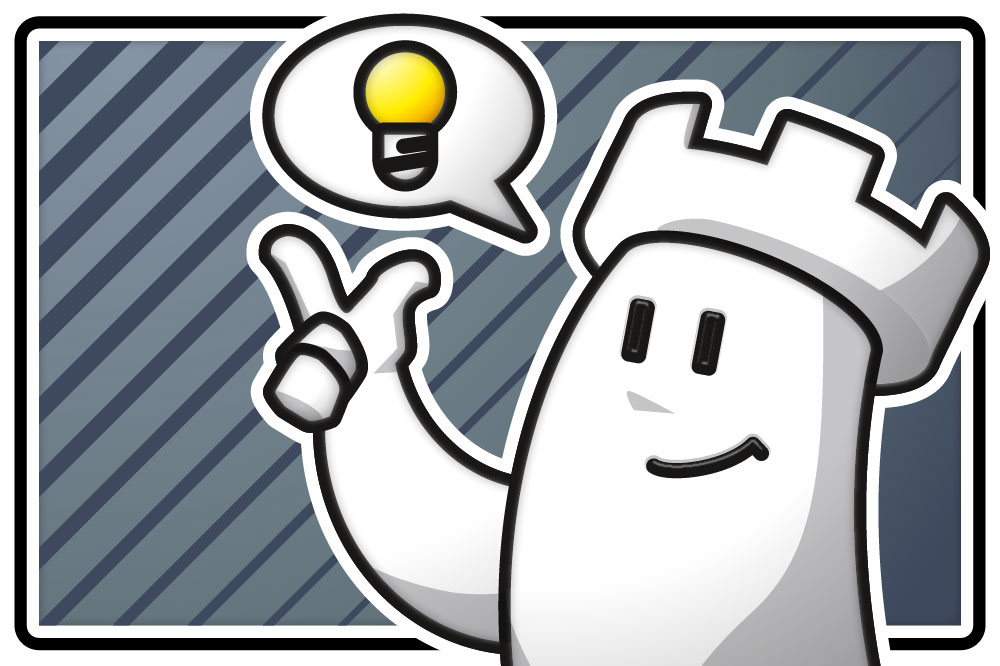Training with CBM – Part 4
The strategy database takes a close look at strategic topics (in CBM 188 the pawn advance g4-g5 when both sides have castled short). In an article and a video with illustrative games GM Mikhail Marin explains the basic aspects of this topic. When can White play for g4-g5, when is this advance good, when is it bad, etc.
Our tutorial wants to show how you can efficiently train with the material presented in the strategy database in the ChessBase Magazine. Use the material as a starting point for extensive "chess discussions" with your engine or for entertaining replay training. ChessBase also helps to find more material about the strategic topics in question.
The strategy database in the ChessBase Magazine
After opening the DVD of the ChessBase Magazine you do find the "Strategy" database by looking for the interlocking cogwheels:
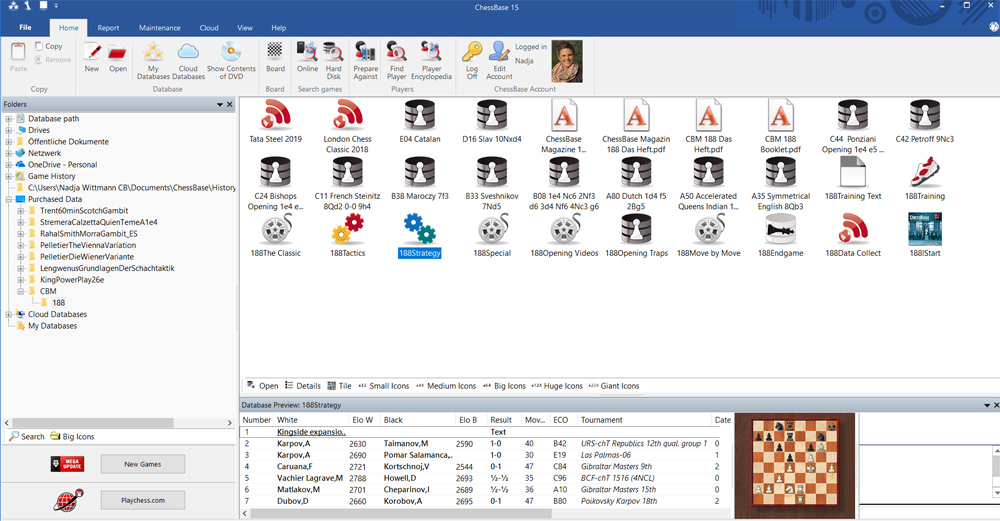
Or you look at the table of contents, go to "Home", "Coaching by experts", and select "Massive pawn attack based on g4-g5 with both kings castled short".

The article comes with an introductory video (in German and in English) by its author GM Mikhail Marin. The text invites you to have a closer look at certain topics and often refers to illustrative games.

Clicking the link opens the game.

The "Strategy" database is a training database and comes with interactive training questions that invite you to test your knowledge and understanding. (See also Tactics training with the ChessBase Magazine).
The illustrative games
Of course, you can also replay the game without answering the training questions. After closing the window with the training questions the notation is in the foreground again, however, the notation is hidden at the position of the training question. You can enter the move that you think is best or you can click Solution after which the notation reappears (until the next training question). This allows you to think about the training questions without time pressure (and without getting points as a reward).
Let’s Check and the chess discussion
Of course, the games selected by the author, are usually well suited for a "chess discussion" with your engine to deepen the topic.
Let's take the game Karpov — Taimanov.
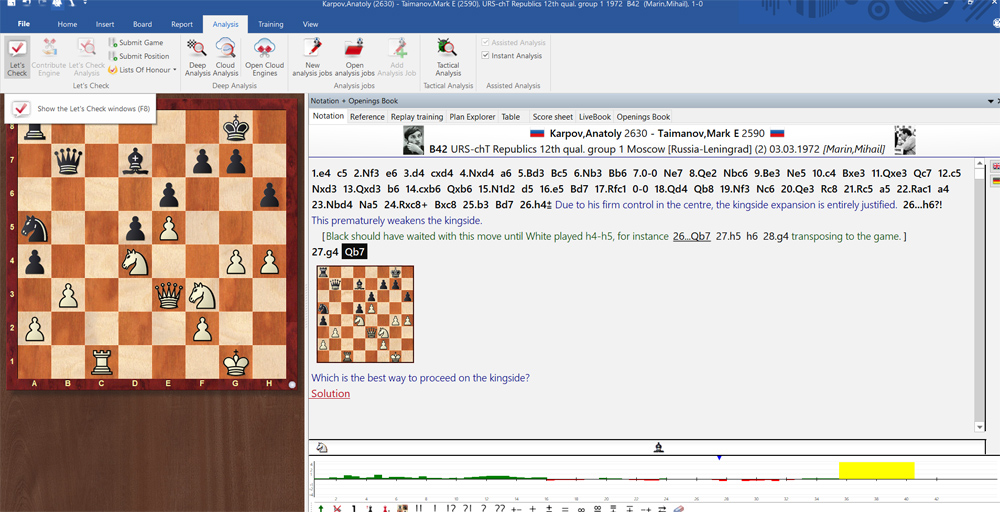
Click or tap to enlarge!

My local engine "thinks" that the game had been roughly equal for a long time. However, Marin claims that the game was rather one-sided. An analysis with Let's Check helps us to take a closer look at the game to find out whether to believe the engine or Marin.

Let’s Check reveals that Black's position is indeed uncomfortable (or even very uncomfortable) after White's thematic move g4-g5.
Of course, the strong engines behind Let's Check analyse the game deeper and better than my local engine and looking at the different evaluations helps to improve one's chess understanding.
Model games and replay training
The model games are also well suited to practice the topic in question with the replay training. Open one of the model games, e.g. Caruana vs Korchnoi by clicking on the link in the text and go into replay training mode. The engine takes a few seconds to come to terms with the new situation but then is ready to train.
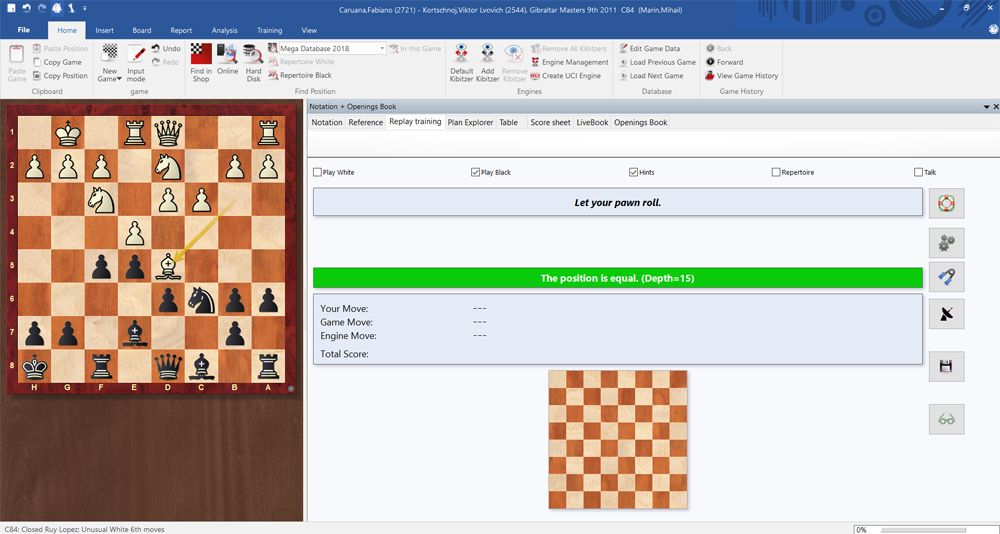
I offer 13....g5 as the move I want to play — a proposal that is rewarded with five points and renewed confidence.

Supported by a few hints from the engine I fare rather well and get a good grasp of the game and its strategic nuances. Which puts me in a good mood to tackle the final combination:
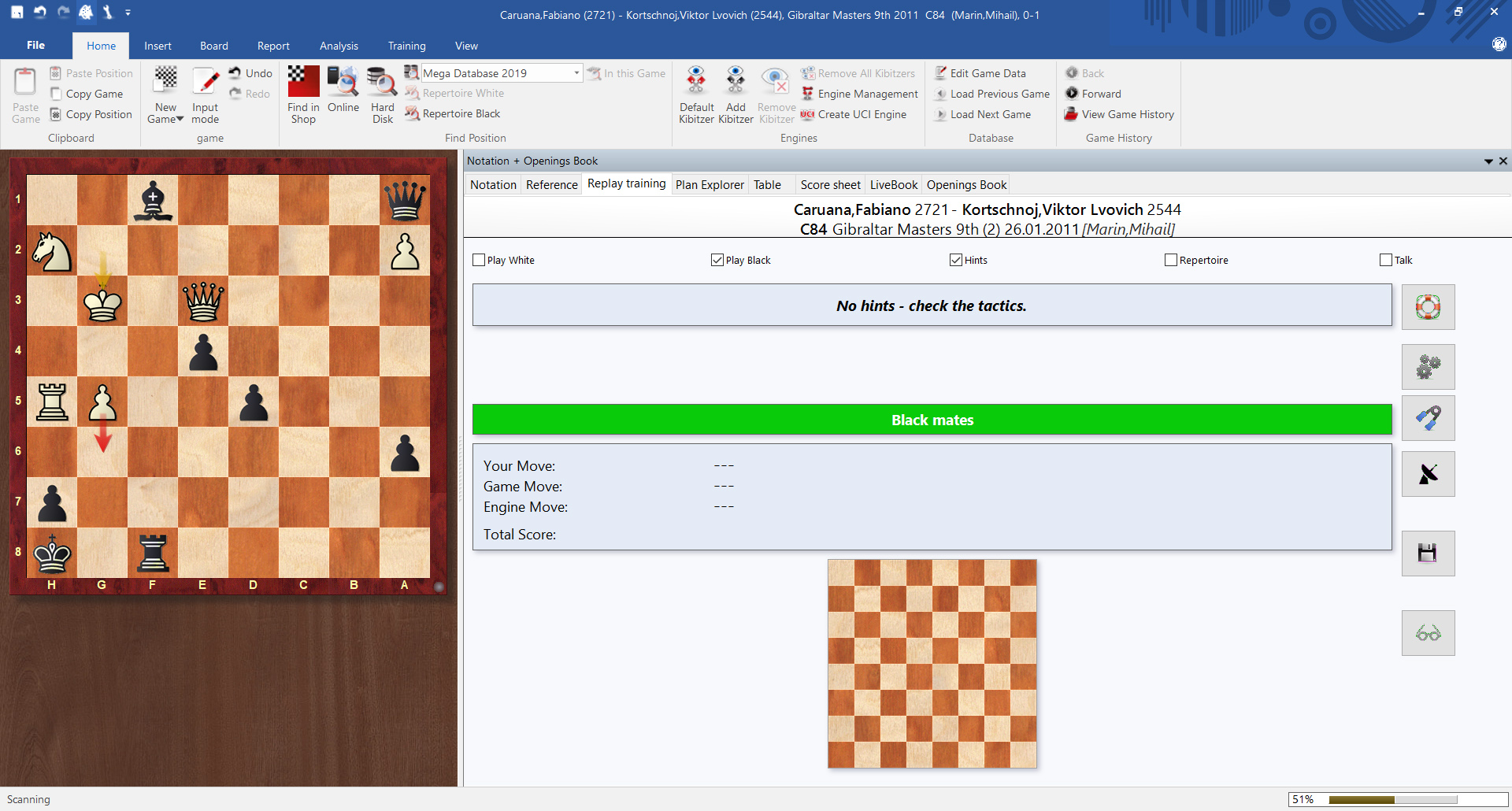

By finding 46...♛e5+ and 47...d4 I finish with a good result and keep good memories of the game.
Finding more material in databases
In his article and the video Marin offers a number of good examples but of course there is always more. ChessBase helps to find it. Let's take the game Caruana vs Korchnoi as starting point and let's search in the Megabase 2019 and the Correspondence Database 2018. We could search with the search mask (Filter List) but ChessBase also offers a simple alternative.
In the game Caruana vs Korchnoi we go the position that arises after 13...g5 — the crucial move for our topic.
Now we select "Report" and then choose "Find games from Reference Database with similar manoeuvres".
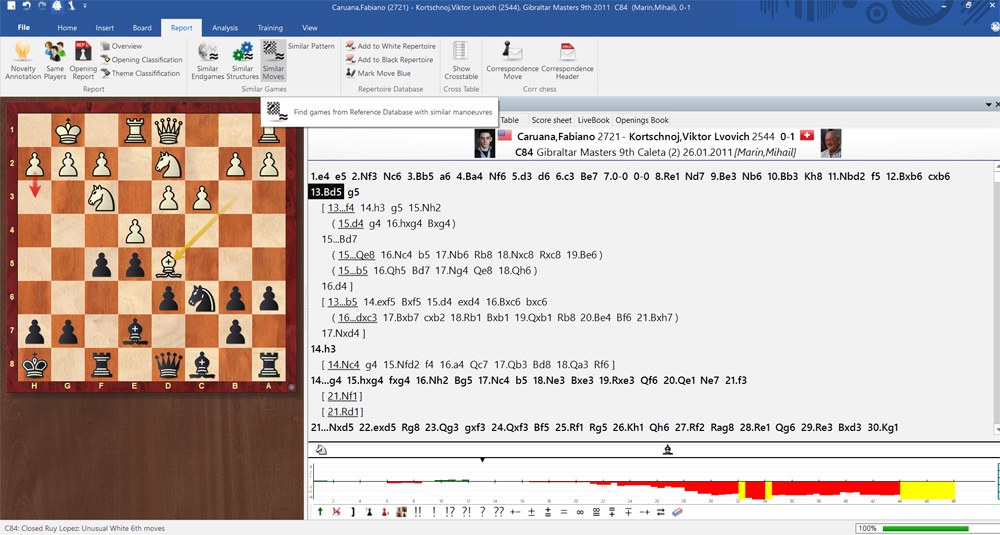
We prepare to search for games that are similar to the position in Caruana vs Korchnoi and in which Black played the manoeuvre g7-g5-g4. The program sorts the games it finds according to their similarity to our original game. Let's look at this search step by step.
It starts with a menu that asks for details of our search. I choose g7-g5-g4.
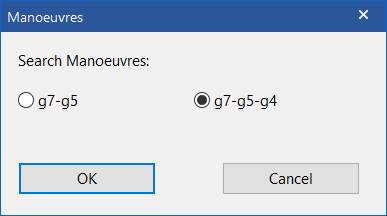
After OK the option Manoeuvres from the search mask appears.
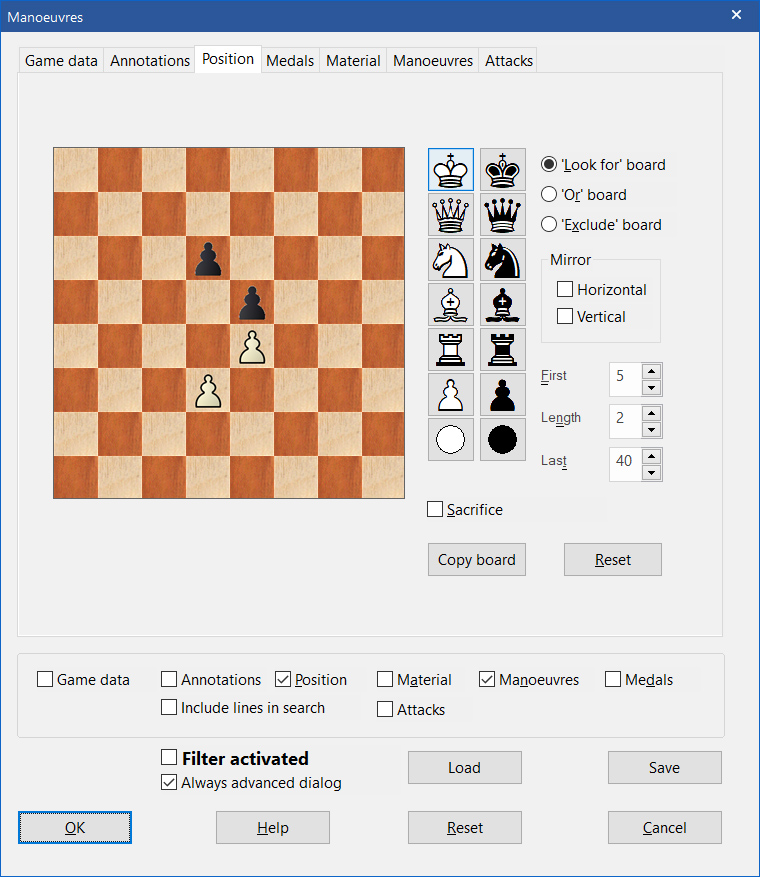
I could refine the search but how to do this will be part of another tutorial. I could also change the search features and refine the search there but this will also be part of another tutorial.
A little hint: if you want to restrict your search to current games (and maybe only games from strong players) go to "Game Data" and search accordingly.
When you press OK the program starts to search for games in my reference database (in the example the Megabase 2019) and sorts the games it found according to their similarity to the starting position from Caruana vs Korchnoi.
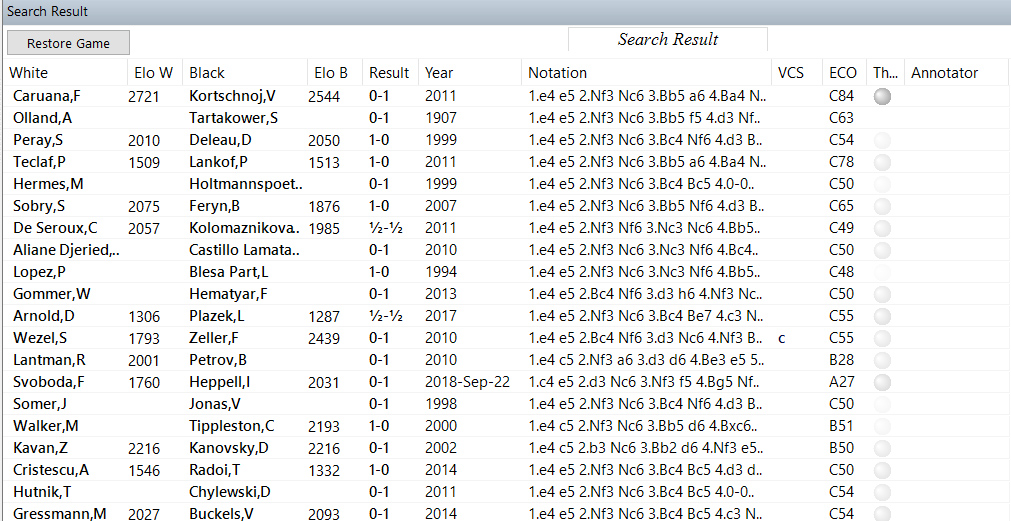
I can now check the games to find more examples related to the topic in question (the advance of the g-pawn).
Have fun and improve your chess with the strategy database in the ChessBase Magazine!
Should you have questions about the material presented here or ideas for more tutorials, feel free to use the "feedback to the editors" link below.
Links
